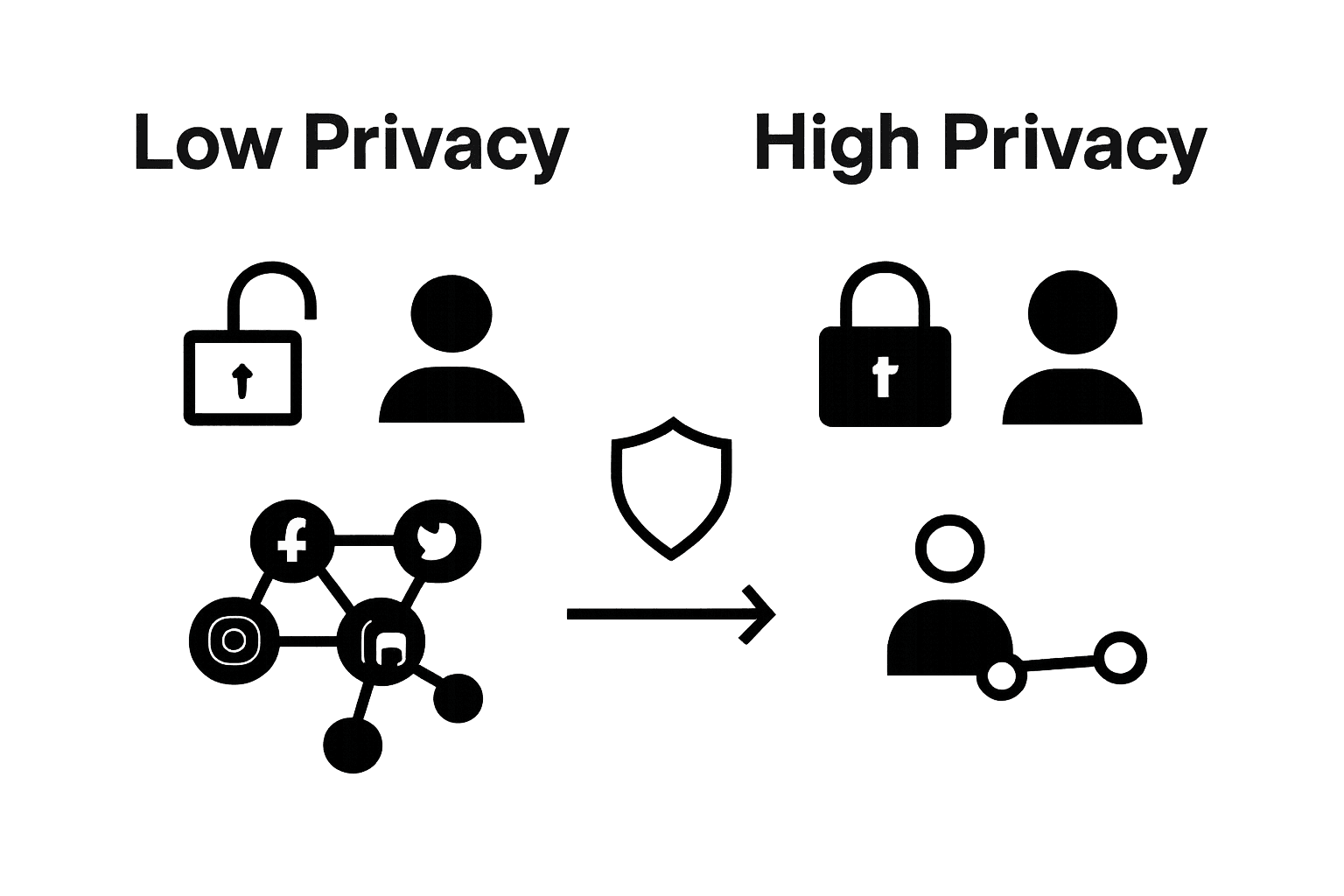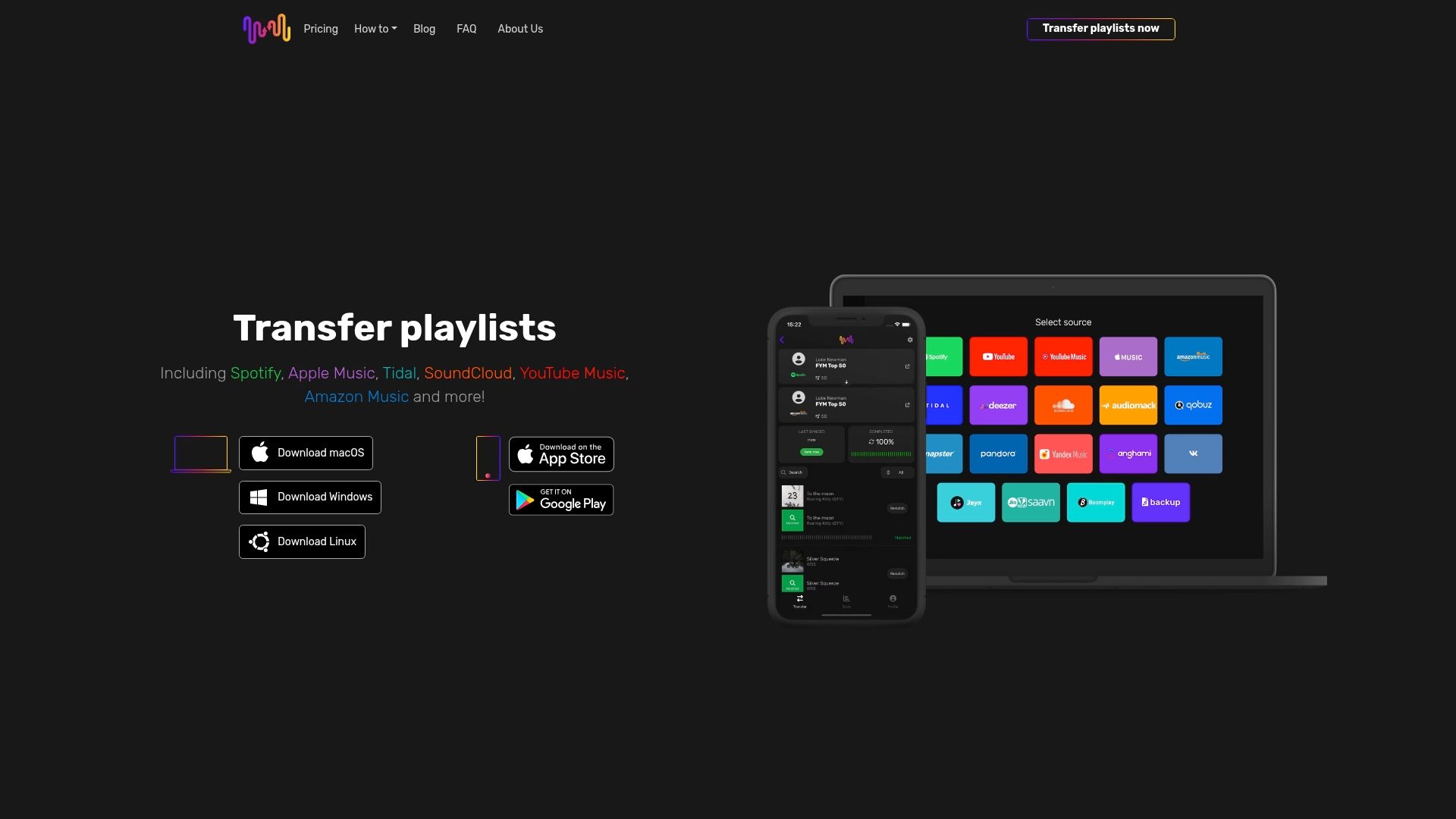Music streaming feels simple. You tap play and instantly hear your favorite tracks. That ease hides something bigger. Streaming platforms collect more than just your song choices—they log exactly when, where, and how you listen every single time. Most people focus on playlists and recommendations, not realizing that all this data creates a detailed profile that reveals far more than musical taste. So your favorite song might be giving away much more about you than you think.
Table of Contents
- What Is Music Streaming Privacy And Why It Matters?
- Understanding Digital Music Data Collection
- Privacy Implications For Music Listeners
- Understanding Data Collection By Music Streaming Services
- The Technical Mechanics Of Data Tracking
- Algorithmic Profiling And User Insights
- The Role Of Encryption And Secure Connections In Streaming
- Understanding Encryption Fundamentals
- Secure Connection Protocols In Music Streaming
- User Control: Managing Privacy Settings And Preferences
- Understanding Privacy Control Mechanisms
- Advanced Privacy Management Techniques
- Implications Of Privacy On Music Discovery And Sharing
- Impact On Personalized Music Recommendations
- Social Sharing And Privacy Boundaries
Quick Summary
| Takeaway | Explanation |
|---|---|
| Understand what data is collected. | Music streaming services track your listening habits, including song plays, duration, and location to create detailed user profiles. |
| Utilize privacy management tools. | Regularly review and adjust your privacy settings, such as data sharing permissions and visibility of listening activities. |
| Use encryption for data security. | Ensure that the music streaming service uses secure connection protocols to protect your personal information during transmission. |
| Acknowledge the trade-off in recommendations. | Restrictive privacy settings can limit personalized music recommendations; balance privacy with discovering new music effectively. |
| Be proactive in managing digital footprints. | Take measures like using anonymous listening modes and VPNs to minimize potential exposure of your listening preferences. |
What is Music Streaming Privacy and Why It Matters?
Music streaming privacy represents the comprehensive protection of user data, listening behaviors, and personal information within digital music platforms. Unlike traditional music consumption methods, streaming services collect substantial amounts of user data that extend far beyond simple music preferences.
Understanding Digital Music Data Collection
When you use a music streaming service, every interaction generates data. This includes not just the songs you play, but intricate details about how and when you listen. Research from the University of Virginia suggests that music platforms increasingly treat music as a datafied commodity, transforming personal listening experiences into trackable digital interactions.
Key data points typically collected include:
- Exact time and duration of song plays
- Specific tracks, albums, and artists you prefer
- Geographical location during music streaming
- Device types and network connections used
- Playlist creation and sharing patterns
Privacy Implications for Music Listeners
The depth of data collection raises significant privacy concerns. Music streaming platforms can potentially create incredibly detailed profiles about users based on their listening habits. These profiles might reveal personal information such as emotional states, cultural backgrounds, social connections, and even potential mental health indicators.
Moreover, this data isn't just stored internally. Many platforms share or sell anonymized user data to third-party advertisers, analytics companies, and market research firms. While legal frameworks like the Digital Millennium Copyright Act provide some protections, users remain largely unaware of how extensively their musical preferences are being monetized.
Understanding these privacy dynamics is crucial for making informed decisions about your digital music consumption.
To help you understand the various types of data collected by music streaming services and their privacy implications, the table below summarizes key data points and their potential uses.
| Data Collected | Description | Potential Privacy Implication |
|---|---|---|
| Song Play Time & Duration | Tracks when and how long you listen to specific songs | Reveals daily routines and personal habits |
| Preferred Tracks, Albums, Artists | Catalogs your musical preferences and trends | Profiles personal interests and moods |
| Geographical Location | Logs your location during streaming sessions | Identifies places visited and daily movement |
| Device Types & Network Connections | Records devices used and networks accessed | Fingerprints user devices; exposes travel |
| Playlist Creation & Sharing | Monitors playlists built and those shared with others | Maps social connections and sharing patterns |
| Listening Frequency & Patterns | Assesses how often and what times you stream music | Suggests emotional states and lifestyle |
Learn more about protecting your music streaming data and maintaining control over your personal information.
Understanding Data Collection by Music Streaming Services
Music streaming services leverage sophisticated data collection mechanisms that transform user interactions into valuable digital assets. Unlike traditional music consumption, these platforms create comprehensive user profiles through advanced tracking technologies and algorithmic analysis.
The Technical Mechanics of Data Tracking
Research from the National Institutes of Health reveals that music streaming platforms employ multifaceted data collection strategies designed to capture granular user information. The technical infrastructure behind these platforms uses multiple tracking mechanisms to compile detailed user insights.
The primary data collection methods include:
- Passive tracking of listening duration and frequency
- Algorithmic analysis of playlist compositions
- Cross-referencing user preferences with demographic data
- Monitoring interaction patterns across different devices
- Geolocation tracking during music streaming sessions
Algorithmic Profiling and User Insights
Streaming services transform raw listening data into sophisticated user profiles through complex algorithmic processes. These profiles extend beyond musical preferences, potentially revealing psychological and behavioral characteristics. Machine learning algorithms analyze listening patterns to generate predictive models about user emotions, cultural backgrounds, and potential consumer behaviors.
The depth of data collection enables platforms to create hyper-personalized experiences while simultaneously generating significant revenue through targeted advertising and data monetization strategies. Learn more about managing your music streaming data and understanding the implications of these tracking mechanisms.
Understanding these intricate data collection processes empowers users to make informed decisions about their digital music consumption and privacy management.
The Role of Encryption and Secure Connections in Streaming
Encryption represents a critical technological safeguard protecting user data during digital music streaming, transforming sensitive information into unreadable code that prevents unauthorized access and potential privacy breaches.
Understanding Encryption Fundamentals
Research from Virginia Tech Library highlights the essential role of encryption in securing digital audio content transmission. Encryption functions as a sophisticated digital shield, converting readable data into complex mathematical algorithms that can only be deciphered with specific cryptographic keys.
Key encryption principles in music streaming include:
- Transforming user data into randomized code sequences
- Creating unique cryptographic keys for each streaming session
- Preventing unauthorized data interception
- Protecting user listening history and personal preferences
- Maintaining confidentiality across different network connections
Secure Connection Protocols in Music Streaming
Secure connection protocols like HTTPS and TLS create an additional layer of protection during music streaming. These protocols establish encrypted communication channels between user devices and streaming servers, ensuring that personal data remains confidential throughout transmission.
Streaming platforms utilize multiple security mechanisms to protect user information:
- End-to-end encryption for user account details
- Secure token-based authentication systems
- Regular security protocol updates
- Advanced encryption standards (AES) for data protection
Learn more about managing your music streaming security and understanding the intricate mechanisms that protect your digital music experience. Understanding these technological safeguards empowers users to make informed decisions about their online privacy and data protection.
User Control: Managing Privacy Settings and Preferences
User control represents a critical mechanism for protecting personal data within music streaming platforms, enabling listeners to actively manage their digital privacy and limit potential information exposure.
Understanding Privacy Control Mechanisms
Research from the Informing Science Institute reveals that users often underutilize available privacy management tools, leaving significant portions of their personal data vulnerable to collection and potential misuse.
Key privacy control strategies include:
- Limiting data sharing permissions
- Configuring visibility of listening activities
- Controlling third-party application access
- Managing location tracking settings
- Regularly reviewing connected devices and sessions
Advanced Privacy Management Techniques
Proactive privacy management goes beyond basic platform settings. Users can implement sophisticated strategies to minimize digital footprints and protect their musical preferences. Intelligent permissions management allows individuals to create granular controls that prevent unauthorized data collection.
Effective privacy protection requires understanding and implementing:
- Anonymous listening modes
- Periodic account privacy audits
- Selective playlist visibility
- Disconnecting unused third-party integrations
- Using virtual private networks during streaming
Learn more about protecting your music streaming data and maintaining comprehensive digital privacy. Understanding and actively managing these settings empowers users to take control of their personal information in the digital music ecosystem.
Here is a comparison of basic and advanced privacy management techniques available to users, organizing their main functionalities and the protection level they offer for your personal data.
| Privacy Management Technique | Description | Level of Protection |
|---|---|---|
| Limiting Data Sharing Permissions | Restricts what data platforms can collect/share | Basic |
| Configuring Activity Visibility | Controls who can see your listening activities | Basic |
| Managing Location Tracking | Allows/disallows services to track your location | Basic |
| Anonymous Listening Modes | Lets you listen without linking to your profile | Advanced |
| Account Privacy Audits | Regularly reviews privacy settings and history | Advanced |
| Selective Playlist Visibility | Controls who can view each of your playlists | Advanced |
| Disconnecting Third-Party Integrations | Removes unused app connections/permissions | Advanced |
| Using Virtual Private Networks (VPNs) | Conceals IP/address and encrypts streaming | Advanced |

Implications of Privacy on Music Discovery and Sharing
Privacy settings significantly influence how users discover, interact with, and share music within digital streaming platforms, creating complex dynamics between personal data protection and musical exploration.
Impact on Personalized Music Recommendations
Research from the Journal of Theoretical and Applied Electronic Commerce demonstrates that user privacy settings directly affect the quality and accuracy of music recommendation algorithms. Restricted data sharing can potentially limit the platform's ability to generate precise musical suggestions, creating a delicate balance between privacy protection and personalized experience.
Key considerations in recommendation algorithms include:
- Analyzing listening patterns without compromising individual privacy
- Generating suggestions based on anonymized data clusters
- Maintaining user trust through transparent recommendation processes
- Balancing algorithmic accuracy with data minimization
- Protecting user preferences from unauthorized profiling
Social Sharing and Privacy Boundaries
Digital music consumption has transformed from a private to a potentially social experience, with privacy settings playing a crucial role in controlling personal musical narratives. Users must carefully navigate the boundaries between sharing musical tastes and protecting sensitive personal information.
Privacy considerations in music sharing involve:
- Controlling playlist and listening activity visibility
- Managing third-party application integrations
- Preventing unintended social media connections
- Protecting personal musical preferences from broader digital surveillance
- Maintaining autonomy in musical self-expression
Learn more about managing your music streaming privacy and understanding the intricate relationship between personal data and musical discovery. Recognizing these dynamics empowers users to make informed decisions about their digital musical experiences.

Safeguard Your Music and Your Data with Free Your Music
Are you concerned about how much control you have over your playlists and privacy when moving between streaming platforms? Protecting your music streaming privacy is about more than just settings—it means knowing exactly where your data and playlists go. With platforms collecting detailed user profiles and personal listening histories, it can feel overwhelming to keep your information safe, especially when switching providers or managing large music libraries.

Take charge of your digital music experience right now. Free Your Music empowers you to move all your playlists—while maintaining your privacy and data security—across major services like Spotify, Apple Music, and Tidal. Enjoy seamless, accurate, and private playlist migration with no risk of losing your favorites or exposing more personal information. Visit our application page and discover how you can manage playlists and your privacy without compromise. Your music, your choice—transfer safely today.
Frequently Asked Questions
What is music streaming privacy?
Music streaming privacy refers to the protection of user data, listening behaviors, and personal information on digital music platforms. It encompasses how user data is collected, managed, and shared by these services.
What types of data do music streaming services collect?
Music streaming services typically collect data like the exact time and duration of song plays, preferred tracks, albums and artists, geographical location, device types, and user-generated playlists.
How can I manage my privacy settings on music streaming platforms?
You can manage your privacy settings by limiting data sharing permissions, controlling the visibility of your listening activities, adjusting location tracking settings, and regularly reviewing connected devices and applications.
What role does encryption play in music streaming privacy?
Encryption safeguards user data during music streaming by converting sensitive information into unreadable code, preventing unauthorized access and ensuring personal data remains secure throughout transmission.
Recommended
- Transfer playlists from YouTube to Audius
- Transfer playlists from YouTube to Anghami
- Transfer playlists from JioSaavn to YouTube
- Transfer playlists from VK Music (VKontakte Music / BOOM) to YouTube






